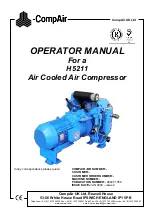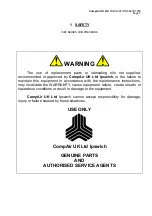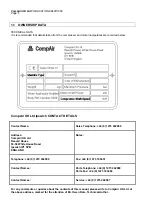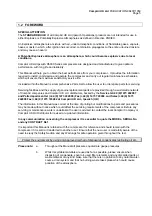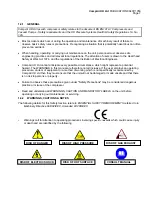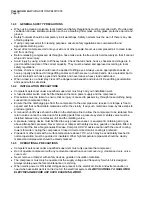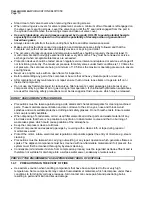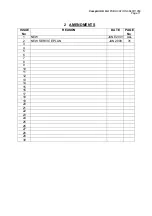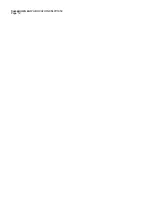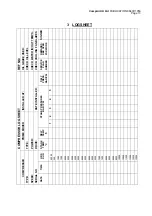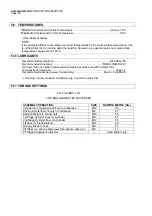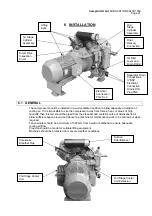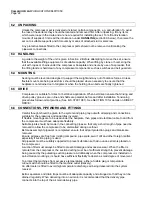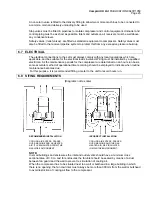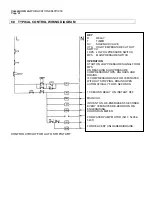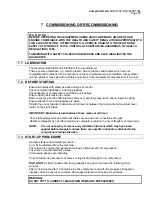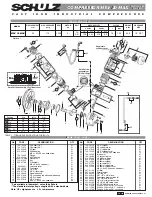
CompAir UK Ltd
PUBLICATION 98407/1050
Page 10
•
Stand clear of all valve covers when removing the securing screws.
•
When removing valve covers for valve replacement, ensure a minimum of two threads is left engaged on
the valve cover securing screws. Lever the valve cover until the 'O' seal is disengaged from the port in
the cylinder head. Remove the securing screws and take out valve cover.
•
Use only lubricating oils and greases approved by CompAir UK LTD to avoid potential hazards
especially the risk of explosion or fire and the possibility of decomposition or generation of
hazardous gases.
•
Always clean oil spills from the surrounding floor before and after maintenance work.
•
Make sure all instructions concerning operation and maintenance are strictly followed and that the
complete unit, with all accessories and safety devices, is kept in good order.
•
The accuracy of pressure gauges and temperature switches should be regularly checked at least 13
month intervals and thoroughly examined at least every 48 months. They must be renewed or service
exchanged when acceptable tolerances are exceeded.
•
Protection devices should be tested at each regular service interval and replaced or service exchanged if
not functioning correctly. The maximum pressure for safety valves under fault conditions is 1.10 times the
set pressure, the set pressure being a minimum of 1.05 times the maximum operating pressure to ensure
seat tightness.
•
Never use a light source with an open flame for inspection.
•
Before dismantling any part of the compressor be sure that all heavy movable parts are secure.
•
After completion of any maintenance or repair ensure that no tools, loose items or rags are left on or
inside the compressor.
•
Do not use any flammable liquid to clean valves, filter elements, cooler passages, pipe bores or any
component carrying a flow of air or gas during normal operation. If chlorinated hydrocarbon substances
are used for cleaning, safety precautions must be taken against toxic vapours, which may be released.
DO NOT USE CARBON TETRACHLORIDE.
•
Precautions must be taken against using acids, alkalis and chemical detergents for cleaning machined
parts. These materials cause irritation and are corrosive to the skin, eyes, nose and throat. Avoid
splashes and wear suitable protective clothing and safety glasses. Do not breathe mists. Ensure water
and soap is readily available.
•
When disposing of condensate, old oil, used filter elements and other parts and waste material of any
kind make sure that there is no pollution to any drain or natural water course and that no burning of
waste takes place which could cause pollution of the atmosphere.
•
Keep the compressor clean at all times.
•
Protect components and exposed openings by covering with a clean cloth or tape during repair or
maintenance work.
•
Protect the motor, intake, electrical and regulation components against the entry of moisture e.g. steam
cleaning.
•
Precautions must be taken when carrying out welding or any repair operation which generates flames or
sparks. The adjacent components must be screened with non-flammable material and if oil present, the
system must first be cleansed thoroughly by steam cleaning.
•
Condensate (oil and water mixture from compression process) must be regarded as trade effluent and is
therefore not suitable for discharge into a surface water sewer, soakaway or watercourse.
PROTECT THE ENVIRONMENT USE
APPROVED METHODS OF DISPOSAL.
1.4.7
PRECAUTIONS IN THE EVENT OF FIRE
•
Use extreme caution when handling components that have been subjected to fire or very high
temperature. Some components may contain fluoroelastomer materials, which decompose under these
conditions to form highly corrosive residues. Skin contact can cause painful and penetrating burns
resulting in permanent skin and tissue damage.
Summary of Contents for 5211.2.IA
Page 2: ......
Page 14: ...CompAir UK Ltd PUBLICATION 98407 1050 Page 12...
Page 16: ...CompAir UK Ltd PUBLICATION 98407 1050 Page 14 REMARKS DATE REMARKS DATE...
Page 22: ...CompAir UK Ltd PUBLICATION 98407 1050 Page 20...
Page 32: ...CompAir UK Ltd PUBLICATION 98407 1050 Page 30...
Page 38: ...CompAir UK Ltd PUBLICATION 98407 1050 Page 36...
Page 61: ......

